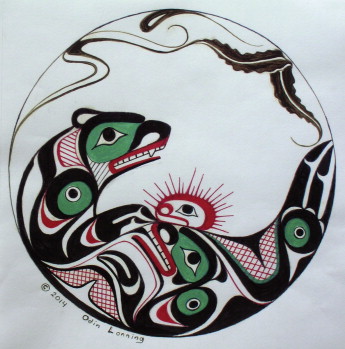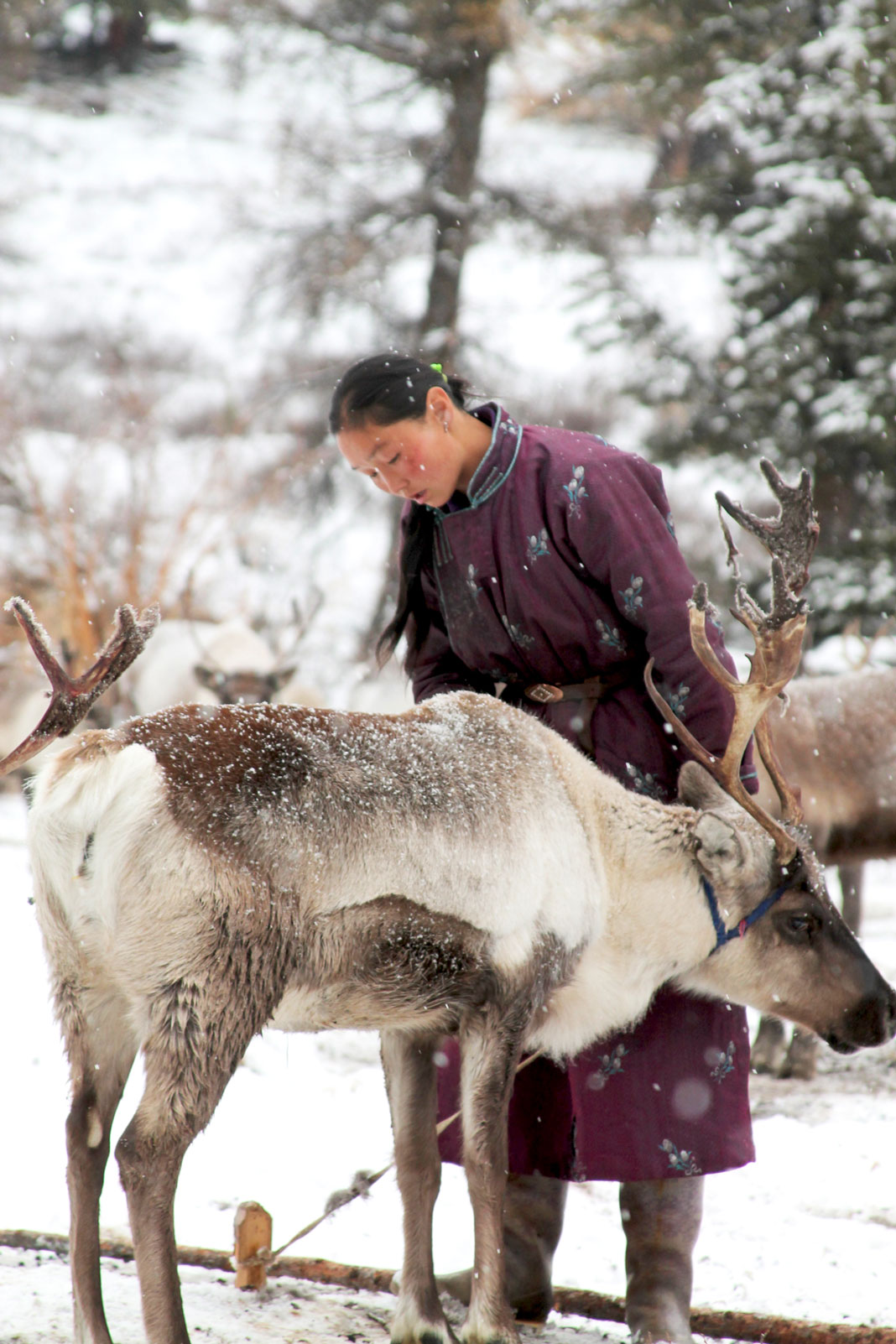2019-2020
Tlingit Relationships with Sea Otters: What can we learn from zooarchaeology?
Tuesday, February 18th, 6:00pm
Giffels Auditorium, Old Main 201, University of Arkansas
Madonna L. Moss, Professor, Department of Anthropology & Curator of Zooarchaeology, Museum of Natural and Cultural History, University of Oregon
 Sea otters (Enhydra lutris) were once common in the North Pacific but were extirpated from southeast Alaska
by about A.D. 1830. In the 1960s, sea otters were re-introduced and now their populations
are rapidly increasing. Today, sea otters and people are competing for some of the
same commercially important invertebrates. After having been absent for nearly 150
years, the re-entry of sea otters into the food web has unsettled people who make
their living from the sea. While some communities perceive sea otters as a threat
to their economic livelihoods, some environmentalists view the return of sea otters
as restoration of the marine ecosystem.The federal Marine Mammal Protection Act (1972)
authorizes any Alaska Native who resides in Alaska to harvest sea otters for the purpose
of subsistence provided that the harvest is not wasteful. Some are seeking to define
“traditional” Tlingit use of sea otters as not only utilizing their pelts, but as
consuming them as food: in their view both of these conditions have to be met before
Alaska Natives would be entitled to harvest sea otters. This project investigates
the zooarchaeological and ethnoarchaeological evidence as to whether Tlingit ancestors
consumed sea otters as food in the past.
Sea otters (Enhydra lutris) were once common in the North Pacific but were extirpated from southeast Alaska
by about A.D. 1830. In the 1960s, sea otters were re-introduced and now their populations
are rapidly increasing. Today, sea otters and people are competing for some of the
same commercially important invertebrates. After having been absent for nearly 150
years, the re-entry of sea otters into the food web has unsettled people who make
their living from the sea. While some communities perceive sea otters as a threat
to their economic livelihoods, some environmentalists view the return of sea otters
as restoration of the marine ecosystem.The federal Marine Mammal Protection Act (1972)
authorizes any Alaska Native who resides in Alaska to harvest sea otters for the purpose
of subsistence provided that the harvest is not wasteful. Some are seeking to define
“traditional” Tlingit use of sea otters as not only utilizing their pelts, but as
consuming them as food: in their view both of these conditions have to be met before
Alaska Natives would be entitled to harvest sea otters. This project investigates
the zooarchaeological and ethnoarchaeological evidence as to whether Tlingit ancestors
consumed sea otters as food in the past.
Madonna L. Moss is Professor of anthropological archaeology at the University of Oregon. She has led and participated in multiple projects, including the Coffman Cove Community Archaeology Project. She is currently working with the Sitka Tribe on The Archaeology of Herring: Reconstructing the Past to Redeem the Future and with Sealaska Heritage Institute on “Did Tlingit and Haida eat sea otters during the pre-contact period?” She has taught university courses for 30 years and has mentored dozens of graduate students. Books include Northwest Coast: Archaeology as Deep History, and The Archaeology of North Pacific Fisheries. Her current research is focused on how use of animal resources is foundational to the cultural identity and heritage of Indigenous groups, and how zooarchaeology can contribute knowledge to improve fish and wildlife management and simultaneously support Alaska Natives in their contemporary subsistence practices. Moss also serves as Curator of Zooarchaeology for the University of Oregon Museum of Natural and Cultural History.
Links:
https://anthropology.uoregon.edu/profile/mmoss/
https://blogs.uoregon.edu/mmoss/
Gender and Space in the Mongolian Taiga
Tuesday, November 12th, 6:00pm
Giffels Auditorium, Old Main 201, University of Arkansas
Todd A. Surovell, Professor & Department Head, Department of Anthropology, University of Wyoming
 The human division of labor by gender is unusual in the animal kingdom and varies
considerably cross-culturally, but the identification of gender in the archaeological record, particularly that of hunter-gatherers, remains problematic. Thus, one major dimension of past human cultural variability remains difficult to study. In 2012, I initiated ethnoarchaeological research with Dukha reindeer herders in Khövsgöl Aimag, Mongolia. The primary aim of that work is to understand the factors governing use of spaceat small scales. Gender was not a focus of this work, but our methods of data collection, careful mapping of human activity
in Dukha campsites, resulted in a robust dataset concerning gender differences in the
use of space. In this presentation, I use these data to explore two simple questions: 1) Should there be gendered spaces in the archaeological record of nomadic peoples?; 2) If so, should
they be archaeologically visible? I argue that the answers to both questions are likely “yes” and conclude with some thoughts about how gender might be studied archaeologically through space and time.
The human division of labor by gender is unusual in the animal kingdom and varies
considerably cross-culturally, but the identification of gender in the archaeological record, particularly that of hunter-gatherers, remains problematic. Thus, one major dimension of past human cultural variability remains difficult to study. In 2012, I initiated ethnoarchaeological research with Dukha reindeer herders in Khövsgöl Aimag, Mongolia. The primary aim of that work is to understand the factors governing use of spaceat small scales. Gender was not a focus of this work, but our methods of data collection, careful mapping of human activity
in Dukha campsites, resulted in a robust dataset concerning gender differences in the
use of space. In this presentation, I use these data to explore two simple questions: 1) Should there be gendered spaces in the archaeological record of nomadic peoples?; 2) If so, should
they be archaeologically visible? I argue that the answers to both questions are likely “yes” and conclude with some thoughts about how gender might be studied archaeologically through space and time.
Todd Surovell is a Professor and Department Head in the Department of Anthropology at the University of Wyoming. He received in B.A. in Anthropology and Zoology from the University of Wisconsin-Madison, and his M.A. and Ph.D. in Anthropology from the University of Arizona.He is an archaeologist with specialization in the Paleoindian period, the first period of New World archaeology. He is also an expert in stone tool technology, the human colonization of the New World, and Pleistocene extinctions. His major research efforts include the excavation of the Barger Gulch site, the La Prele Mammoth site, and the Dukha Ethnoarchaeological Project, a study of nomadic reindeer herders in Mongolia. He has participated in archaeological fieldwork throughout the Rocky Mountain west as well as in Israel and Denmark.
Professional website: https://www.toddsurovell.com